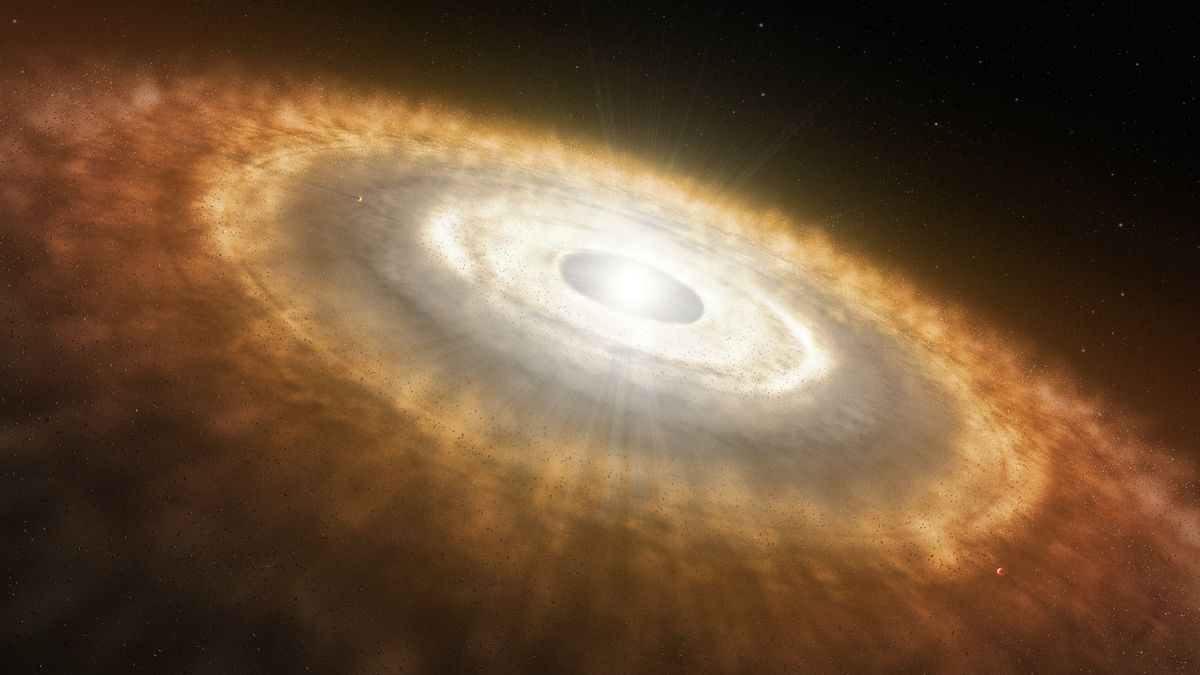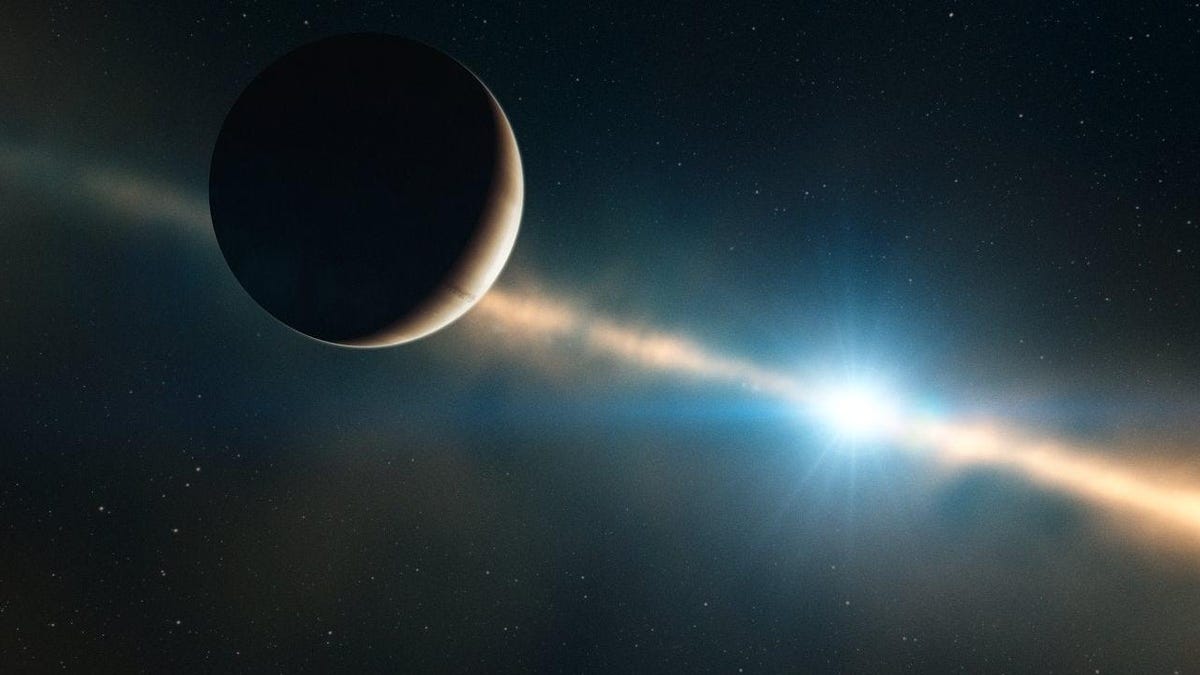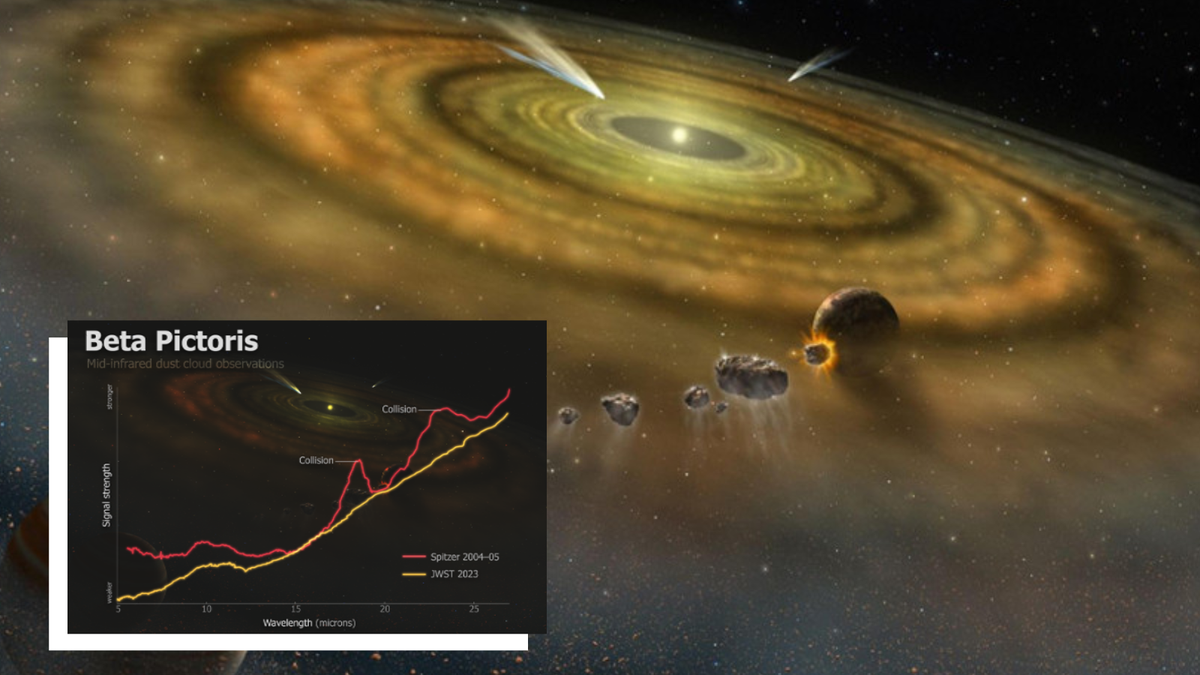
In a groundbreaking discovery, astronomers have uncovered evidence of a cataclysmic asteroid collision that took place in the nearby Beta Pictoris star system approximately 20 years ago. The violent impact ejected an unprecedented amount of dust, estimated to be around 100,000 times more than the dust released during the asteroid impact that caused the extinction of dinosaurs on Earth.
Beta Pictoris is a young star system, having existed for only about 20 million years compared to our solar system's age of 4.5 billion years. Located approximately 63 light-years away from Earth in the constellation Pictoris, it was first detected in the early 1980s.
Using data from various telescopes, including the James Webb Space Telescope (JWST), scientists have pieced together this intriguing story. Previous observations of Beta Pictoris revealed a significant dust cloud surrounding the star system. However, recent JWST data showed that this dust cloud had largely disappeared.
To understand what could have caused such a change, researchers compared the new JWST data with older observations from other telescopes. They noticed that certain spectral features associated with crystalline silicates were absent in the new data. These chemical fingerprints are typically present when dust grains collide and shatter, releasing these minerals into space.
Further analysis revealed that the absence of these spectral features could only be explained by a massive asteroid collision that occurred between two large bodies within the Beta Pictoris system around 20 years ago. The impact released an enormous amount of dust, which has since dispersed throughout the star system.
This discovery not only sheds light on the dynamic nature of young star systems but also provides valuable insights into planetary formation and evolution. It serves as a reminder that our universe is constantly changing and offers endless opportunities for scientific exploration.




